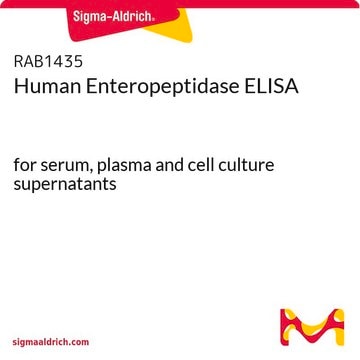50611
Atto 700 maleimide
BioReagent, suitable for fluorescence, ≥90% (coupling to thiols)
Sign Into View Organizational & Contract Pricing
All Photos(1)
About This Item
Recommended Products
product line
BioReagent
Assay
≥90% (coupling to thiols)
manufacturer/tradename
ATTO-TEC GmbH
fluorescence
λex 645 nm; λem 715 nm in 0.1 M phosphate pH 7.0
suitability
suitable for fluorescence
storage temp.
−20°C
Application
Atto 700 belongs to a new generation of fluorescent labels. The dye is designed for application in the area of life science, e.g. labeling of DNA, RNA or proteins. Maleimides are well suited for coupling to thiol groups. This is similar to iodacetamides, but maleimides do react more thiol selective. They do not show significant reaction with histidine or methionine. Hydrolysis of maleimides to a mixture of isomeric nonreactive maleamic acids can compete significantly with thiol modification, particularly above pH 8. Maleimides may be used for labeling of amines, which usually requires a higher pH than reaction of maleimides with thiols.
Legal Information
This product is for Research use only. In case of intended commercialization, please contact the IP-holder (ATTO-TEC GmbH, Germany) for licensing.
Storage Class Code
11 - Combustible Solids
WGK
WGK 3
Flash Point(F)
Not applicable
Flash Point(C)
Not applicable
Personal Protective Equipment
dust mask type N95 (US), Eyeshields, Gloves
Certificates of Analysis (COA)
Search for Certificates of Analysis (COA) by entering the products Lot/Batch Number. Lot and Batch Numbers can be found on a product’s label following the words ‘Lot’ or ‘Batch’.
Already Own This Product?
Find documentation for the products that you have recently purchased in the Document Library.
Multicolour single molecule imaging in cells with near infra-red dyes.
Tynan, C.J., et al.
PLoS ONE, 4, e36265-e36265 (2012)
Jan Vogelsang et al.
Photochemical & photobiological sciences : Official journal of the European Photochemistry Association and the European Society for Photobiology, 8(4), 486-496 (2009-04-02)
The role and interplay of triplet states and radical ion states in single-molecule fluorescence spectroscopy has recently been elaborated providing us with new insights into the photophysics and photobleaching pathways of fluorescent dyes. Adjustment of fluorophore redox properties in combination
Patricia Haus et al.
Journal of biomolecular screening, 16(10), 1206-1216 (2011-10-27)
Histone deacetylases (HDACs) are important epigenetic factors regulating a variety of vital cellular functions such as cell cycle progression, differentiation, cell migration, and apoptosis. Consequently, HDACs have emerged as promising targets for cancer therapy. The drugability of HDACs has been
Daniel Riester et al.
Bioorganic & medicinal chemistry letters, 19(13), 3651-3656 (2009-05-22)
Histone deacetylases reside among the most important and novel target classes in oncology. Selective lead structures are intensively developed to improve efficacy and reduce adverse effects. The common assays used so far to identify new lead structures suffer from many
Judith E Berlier et al.
The journal of histochemistry and cytochemistry : official journal of the Histochemistry Society, 51(12), 1699-1712 (2003-11-19)
Amine-reactive N-hydroxysuccinimidyl esters of Alexa Fluor fluorescent dyes with principal absorption maxima at about 555 nm, 633 nm, 647 nm, 660 nm, 680 nm, 700 nm, and 750 nm were conjugated to antibodies and other selected proteins. These conjugates were
Our team of scientists has experience in all areas of research including Life Science, Material Science, Chemical Synthesis, Chromatography, Analytical and many others.
Contact Technical Service




